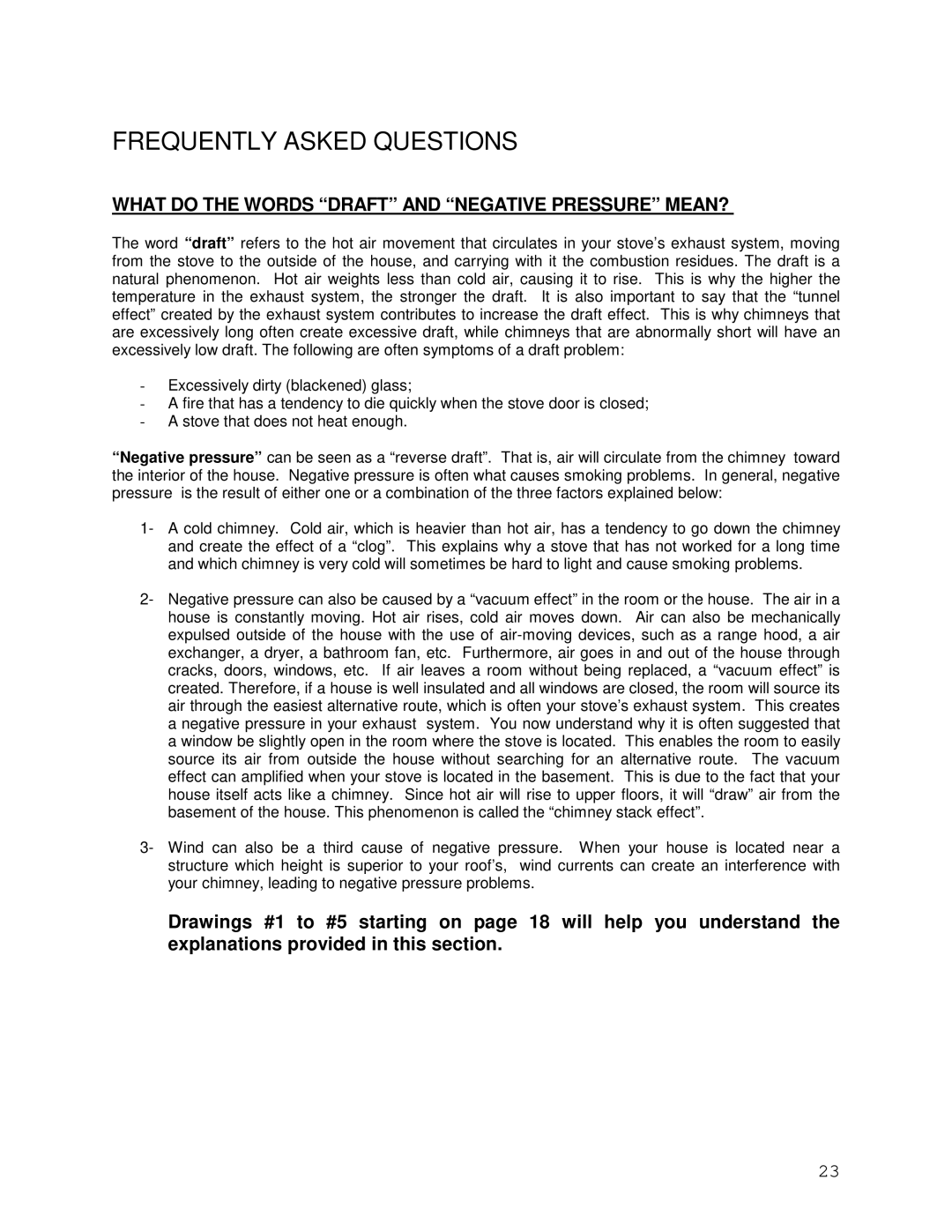DB05130 specifications
The Drolet DB05130 is a highly efficient wood-burning stove designed to provide warmth and comfort while being environmentally friendly. With an innovative design and advanced features, it stands as a notable choice for homeowners looking for alternative heating solutions. This model's primary focus is on delivering effective heating while minimizing emissions, making it an ideal option for those conscious of their carbon footprint.One of the key features of the Drolet DB05130 is its exceptional heat output. With a maximum output of up to 70,000 BTUs, this stove can heat areas of up to 2,500 square feet, making it suitable for larger spaces. The large firebox, designed with practicality in mind, allows for longer burn times, meaning less frequent reloading of wood. Users can expect an impressive burn time of up to 12 hours on a single charge of wood, enhancing convenience for busy households.
Another significant characteristic of the DB05130 is its efficiency. With an EPA-certified rating, this stove boasts an efficiency rating of over 80%. This high efficiency not only translates to better fuel consumption but also ensures that users are reducing their environmental impact. Featuring a secondary combustion system, the DB05130 effectively burns off gases and particulates, which contributes to its lower emissions.
In terms of design, the Drolet DB05130 showcases a modern aesthetic with a classic touch. Made from solid steel, it is built to last while offering excellent heat retention. The large glass door not only adds to its visual appeal but also allows for an impressive view of the flames, enhancing the ambiance of any room. The stove is equipped with air-wash technology, which keeps the glass clean, ensuring a clear view of the fire.
Installation and maintenance are made straightforward with the Drolet DB05130. It is designed to accommodate both top and rear venting, providing flexibility for different home designs. Additionally, the simple ash removal system makes cleaning hassle-free, allowing users to enjoy their stove without the burden of extensive upkeep.
In summary, the Drolet DB05130 amalgamates modern technology, efficiency, and elegant design, making it a standout choice for wood-burning stoves. With its ability to heat large spaces while maintaining environmental responsibility, this model is poised to meet the needs of homeowners seeking reliable and effective heating solutions.
